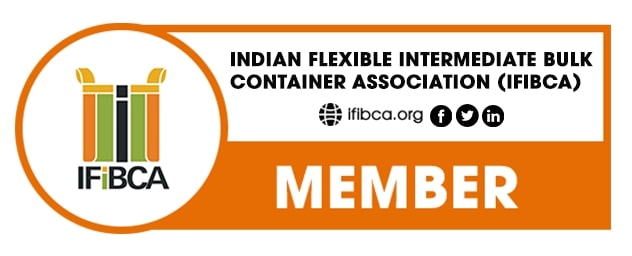Introduction:
Flexible Intermediate Bulk Containers (FIBC), also known as big bags, are widely used in various industries for the storage and transportation of bulk goods. To ensure the longevity and optimal performance of FIBC bags, proper maintenance and cleaning practices are essential. In this blog, we will discuss some best practices for FIBC bag maintenance and cleaning, helping businesses maximise the lifespan and usability of these versatile containers.
Regular Inspection:
Regular inspection of FIBC bags is crucial to identify any signs of wear, damage, or contamination. Inspect the bags for any tears, holes, or frayed edges, as these can compromise their structural integrity. Check the lifting loops and seams for any signs of weakening or separation. Additionally, inspect the bag for any residual product or stains that could lead to cross-contamination. Early detection of issues allows for timely repairs or replacements, ensuring the safe and efficient use of FIBC bags.
Handling and Storage:
Proper handling and storage practices contribute significantly to the maintenance of FIBC bags. When lifting or moving the bags, ensure that the lifting loops are not twisted or overloaded. Follow the manufacturer’s guidelines regarding the maximum weight capacity to prevent strain on the bag. During storage, keep FIBC bags in a clean, dry area away from direct sunlight and extreme temperatures. Storing bags on pallets or racks can prevent moisture absorption and minimise the risk of damage.
Cleaning:
Cleaning FIBC bags is essential to maintain hygiene and prevent cross-contamination between different products or industries. Here are some best practices for cleaning FIBC bags:
Emptying:
Ensure that the bag is completely empty before cleaning. Empty the bag in a designated area to prevent contamination of other products or surfaces.
Dry Cleaning:
For bags that only require surface cleaning, use a soft brush or cloth to remove any loose dirt or debris. Vacuuming can also be an effective method for removing dry residues.
Washing:
In cases where the bag requires more thorough cleaning, consider washing it. Follow the manufacturer’s instructions for washing, which may include specific temperature, detergent, and washing machine recommendations. Use mild detergents and avoid harsh chemicals that may damage the bag’s fabric.
Drying:
After washing, ensure the bag is thoroughly dried before reuse or storage. Hang the bag in a well-ventilated area or use air blowers to accelerate the drying process. Moisture retention can lead to mould or mildew growth, compromising the bag’s integrity.
Repairs and Replacements:
Promptly address any damages or wear detected during inspection. Small tears or punctures can be repaired using specialised repair tapes or patches recommended by the manufacturer. It is important to follow proper repair procedures to maintain the bag’s strength and integrity. However, if the damage is extensive or beyond repair, it is recommended to replace the bag to avoid potential safety risks.
Training and Education:
Proper training and education of personnel handling FIBC bags are essential to ensure their correct usage and maintenance. Train employees on proper lifting techniques, weight limits, and handling practices to prevent unnecessary stress on the bags. Educate them about the importance of inspection, cleaning, and reporting any issues promptly. By promoting a culture of awareness and responsibility, businesses can significantly improve the maintenance and lifespan of FIBC bags.
Conclusion:
Implementing effective maintenance and cleaning practices for FIBC bags is crucial for their longevity, safety, and performance. Regular inspection, proper handling and storage, thorough cleaning, and timely repairs or replacements are essential steps in maintaining these versatile containers. By following these best practices, businesses can optimise the lifespan and usability of FIBC bags, leading to cost savings, improved efficiency, and enhanced product quality in various industries.


